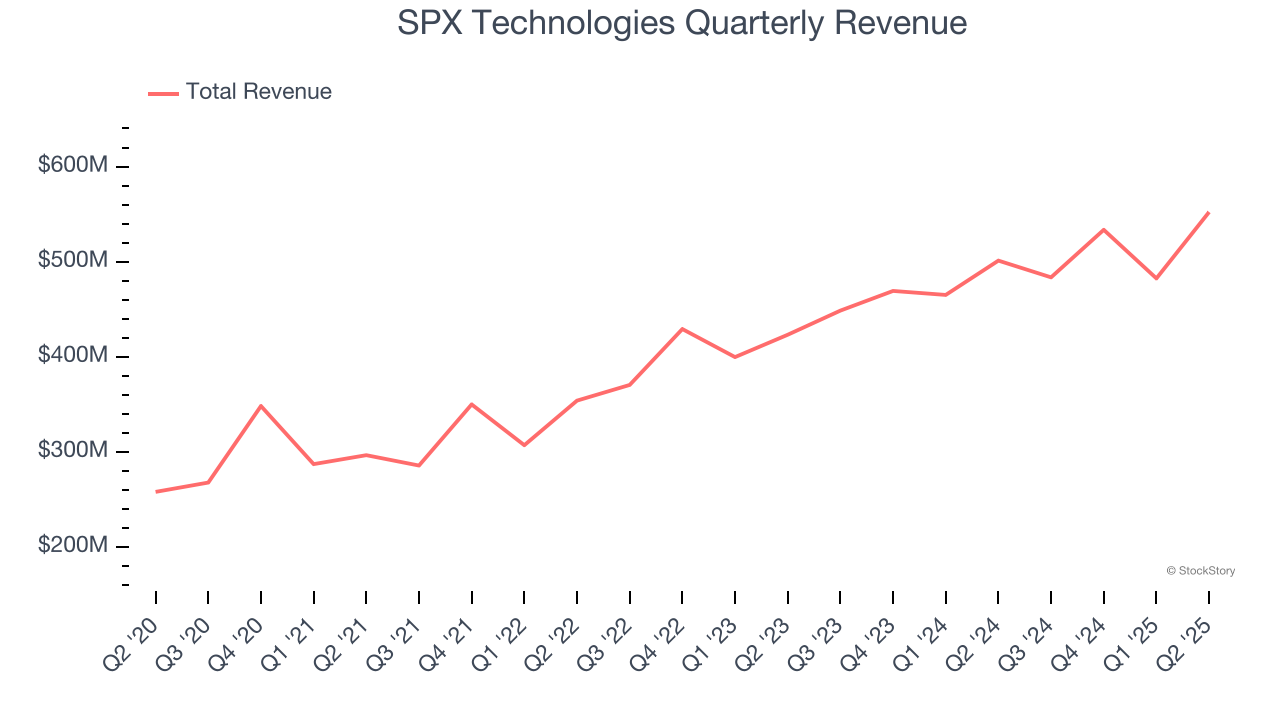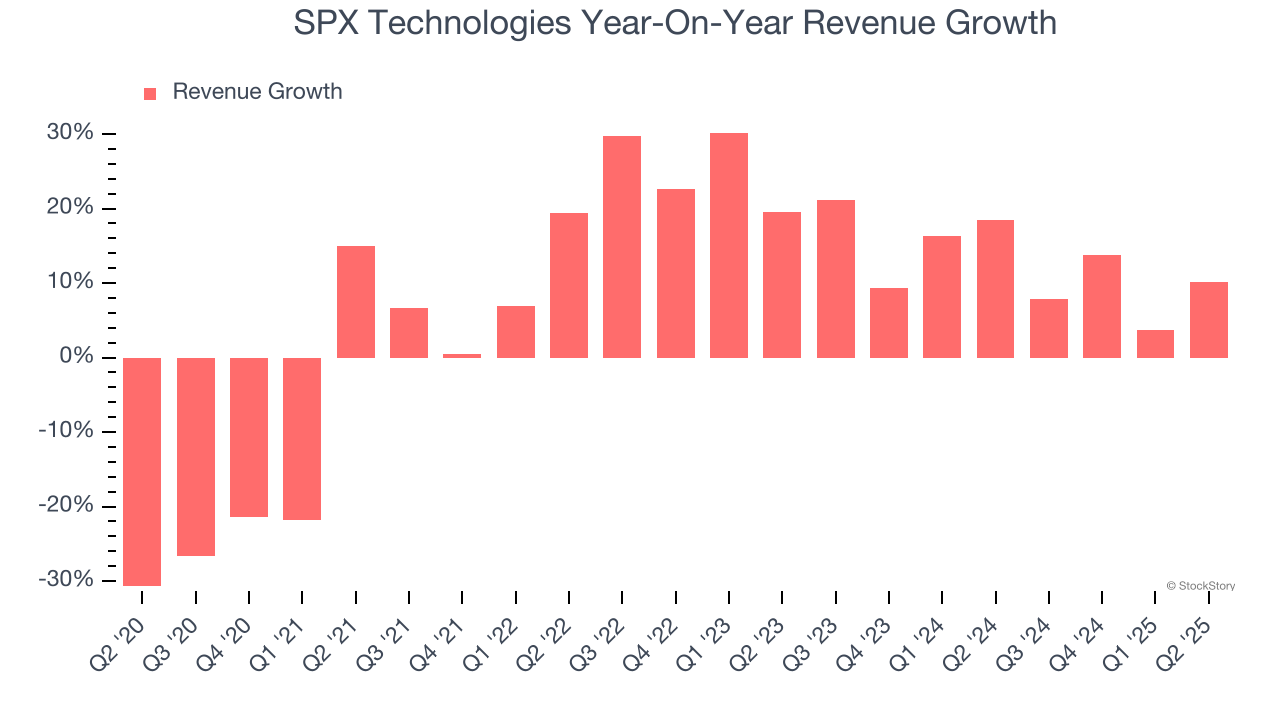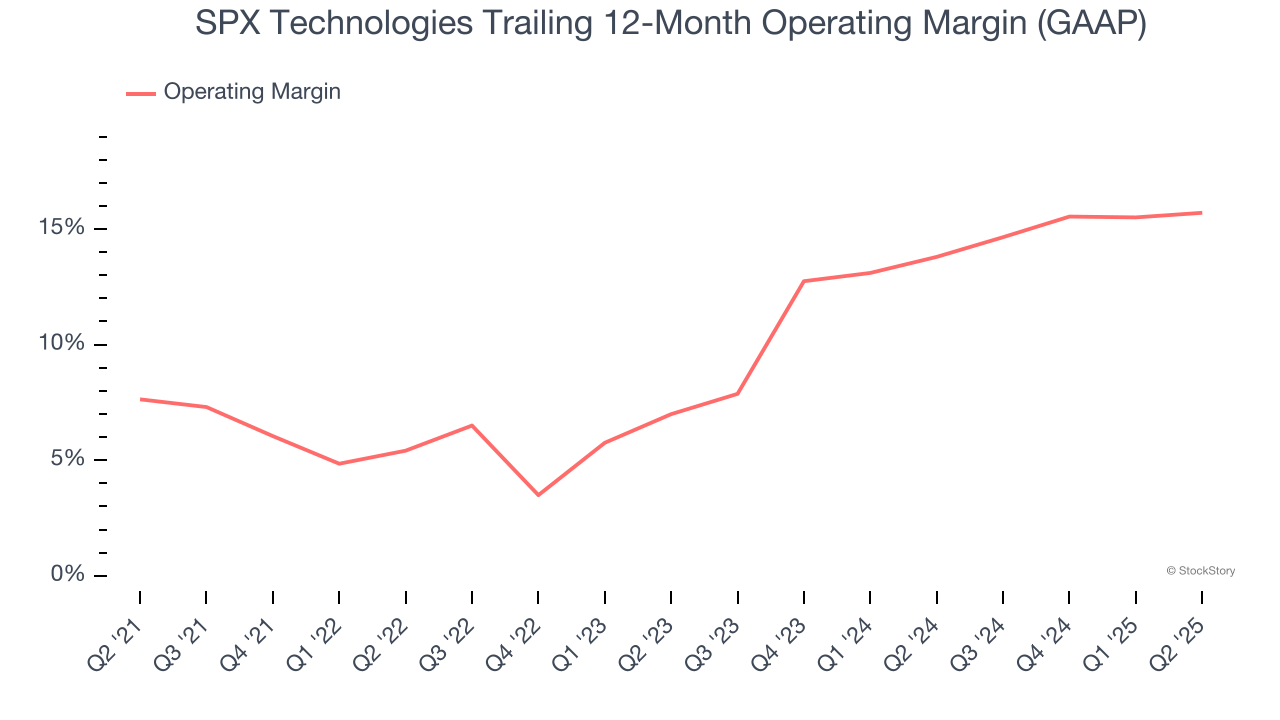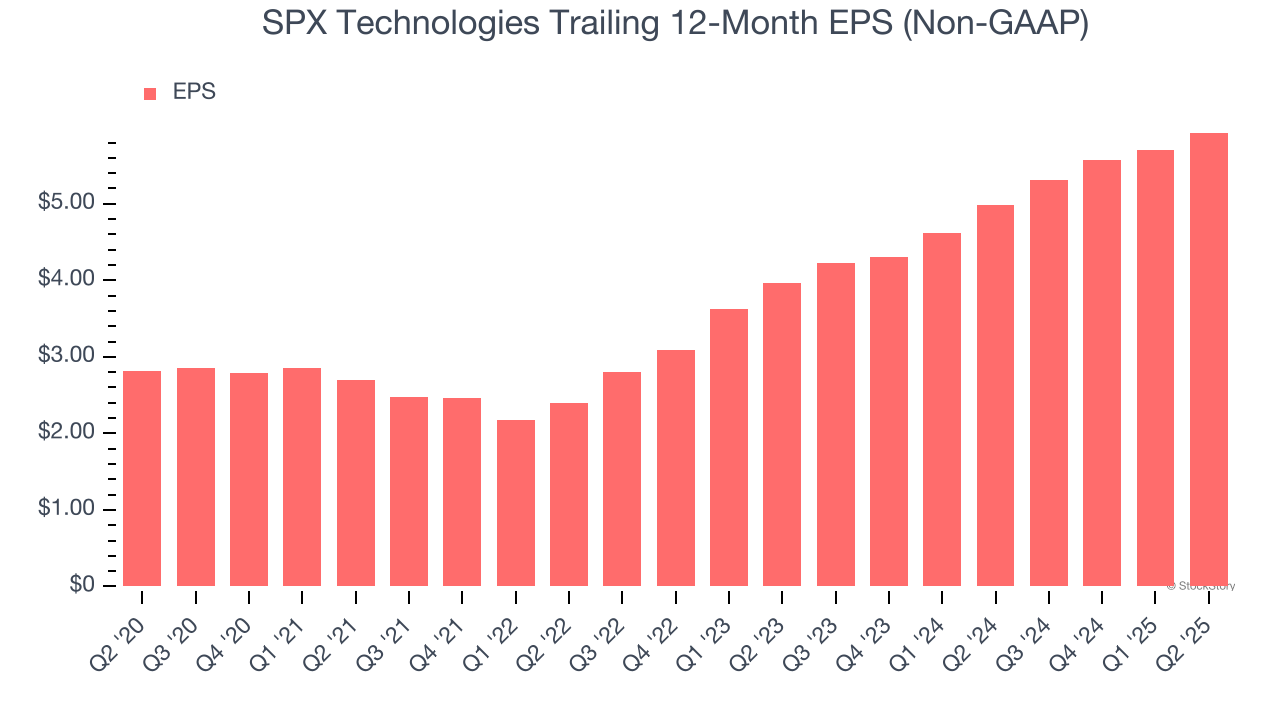
Industrial conglomerate SPX Technologies (NYSE:SPXC) reported Q2 CY2025 results exceeding the market’s revenue expectations, with sales up 10.2% year on year to $552.4 million. The company’s full-year revenue guidance of $2.25 billion at the midpoint came in 1.5% above analysts’ estimates. Its non-GAAP profit of $1.65 per share was 13.6% above analysts’ consensus estimates.
Is now the time to buy SPX Technologies? Find out by accessing our full research report, it’s free.
SPX Technologies (SPXC) Q2 CY2025 Highlights:
- Revenue: $552.4 million vs analyst estimates of $548.2 million (10.2% year-on-year growth, 0.8% beat)
- Adjusted EPS: $1.65 vs analyst estimates of $1.45 (13.6% beat)
- Adjusted EBITDA: $126.7 million vs analyst estimates of $115.6 million (22.9% margin, 9.6% beat)
- The company slightly lifted its revenue guidance for the full year to $2.25 billion at the midpoint from $2.23 billion
- Management raised its full-year Adjusted EPS guidance to $6.50 at the midpoint, a 4% increase
- EBITDA guidance for the full year is $497.5 million at the midpoint, above analyst estimates of $482.7 million
- Operating Margin: 15.7%, in line with the same quarter last year
- Free Cash Flow Margin: 6.3%, down from 9.9% in the same quarter last year
- Market Capitalization: $8.47 billion
Company Overview
SPX Technologies (NYSE:SPXC) is an industrial conglomerate catering to the energy, manufacturing, automotive, and aerospace sectors.
Revenue Growth
Reviewing a company’s long-term sales performance reveals insights into its quality. Any business can put up a good quarter or two, but the best consistently grow over the long haul. Unfortunately, SPX Technologies’s 7.4% annualized revenue growth over the last five years was mediocre. This wasn’t a great result compared to the rest of the industrials sector, but there are still things to like about SPX Technologies.

Long-term growth is the most important, but within industrials, a half-decade historical view may miss new industry trends or demand cycles. SPX Technologies’s annualized revenue growth of 12.5% over the last two years is above its five-year trend, suggesting its demand recently accelerated. 
This quarter, SPX Technologies reported year-on-year revenue growth of 10.2%, and its $552.4 million of revenue exceeded Wall Street’s estimates by 0.8%.
Looking ahead, sell-side analysts expect revenue to grow 11.8% over the next 12 months, similar to its two-year rate. This projection is healthy and implies the market is forecasting success for its products and services.
Software is eating the world and there is virtually no industry left that has been untouched by it. That drives increasing demand for tools helping software developers do their jobs, whether it be monitoring critical cloud infrastructure, integrating audio and video functionality, or ensuring smooth content streaming. Click here to access a free report on our 3 favorite stocks to play this generational megatrend.
Operating Margin
SPX Technologies has managed its cost base well over the last five years. It demonstrated solid profitability for an industrials business, producing an average operating margin of 10.6%. This result isn’t surprising as its high gross margin gives it a favorable starting point.
Analyzing the trend in its profitability, SPX Technologies’s operating margin rose by 8.1 percentage points over the last five years, as its sales growth gave it operating leverage.

This quarter, SPX Technologies generated an operating margin profit margin of 15.7%, in line with the same quarter last year. This indicates the company’s cost structure has recently been stable.
Earnings Per Share
Revenue trends explain a company’s historical growth, but the long-term change in earnings per share (EPS) points to the profitability of that growth – for example, a company could inflate its sales through excessive spending on advertising and promotions.
SPX Technologies’s EPS grew at a spectacular 16% compounded annual growth rate over the last five years, higher than its 7.4% annualized revenue growth. This tells us the company became more profitable on a per-share basis as it expanded.

We can take a deeper look into SPX Technologies’s earnings to better understand the drivers of its performance. As we mentioned earlier, SPX Technologies’s operating margin was flat this quarter but expanded by 8.1 percentage points over the last five years. This was the most relevant factor (aside from the revenue impact) behind its higher earnings; interest expenses and taxes can also affect EPS but don’t tell us as much about a company’s fundamentals.
Like with revenue, we analyze EPS over a more recent period because it can provide insight into an emerging theme or development for the business.
For SPX Technologies, its two-year annual EPS growth of 22.2% was higher than its five-year trend. We love it when earnings growth accelerates, especially when it accelerates off an already high base.
In Q2, SPX Technologies reported adjusted EPS at $1.65, up from $1.42 in the same quarter last year. This print easily cleared analysts’ estimates, and shareholders should be content with the results. Over the next 12 months, Wall Street expects SPX Technologies’s full-year EPS of $5.93 to grow 11.5%.
Key Takeaways from SPX Technologies’s Q2 Results
We were impressed by how significantly SPX Technologies blew past analysts’ EPS and EBITDA expectations this quarter. We were also glad it raised its full-year revenue, EPS, and EBITDA guidance. Zooming out, we think this quarter featured some important positives. The stock traded up 5.6% to $192.37 immediately following the results.
SPX Technologies put up rock-solid earnings, but one quarter doesn’t necessarily make the stock a buy. Let’s see if this is a good investment. What happened in the latest quarter matters, but not as much as longer-term business quality and valuation, when deciding whether to invest in this stock. We cover that in our actionable full research report which you can read here, it’s free.
